Evening Star: Similarities and Differences with Other Candlestick Patterns
The configuration of an evening star has resemblances to other candlestick patterns, including the shooting star, the tower top, and the doji.
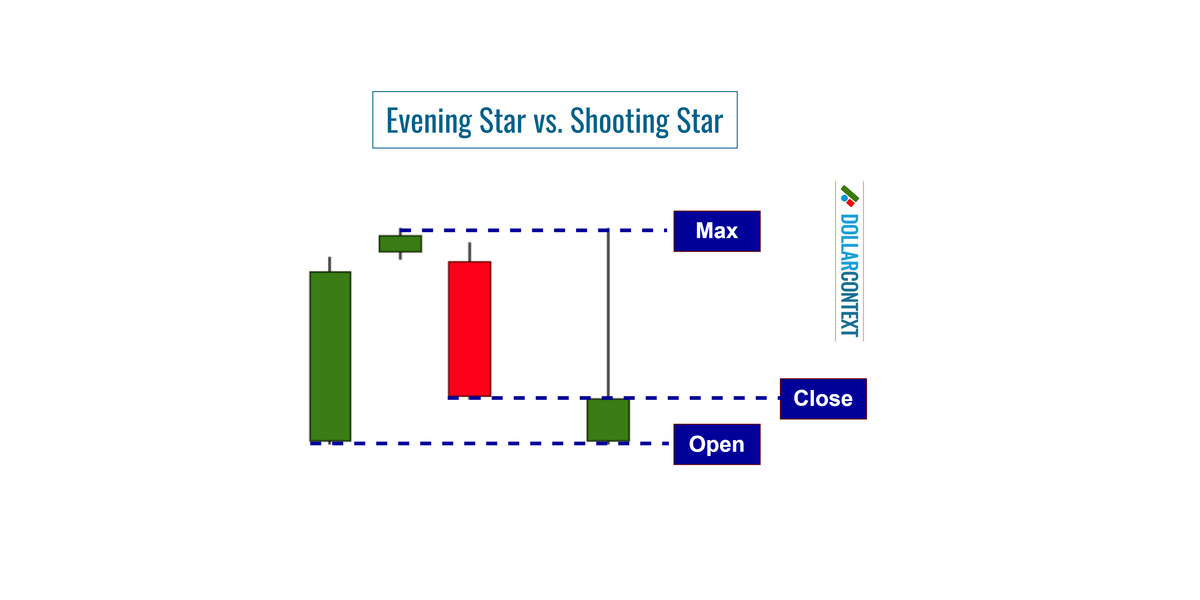
In candlestick charting, the evening star pattern stands out as a prominent and widely used indicator. This trio of candles starts with a sizable green candle, signaling strong buying interest, followed by a smaller candle that gaps higher, and finishes with a substantial red candle that penetrates deeply into the territory of the first candle.
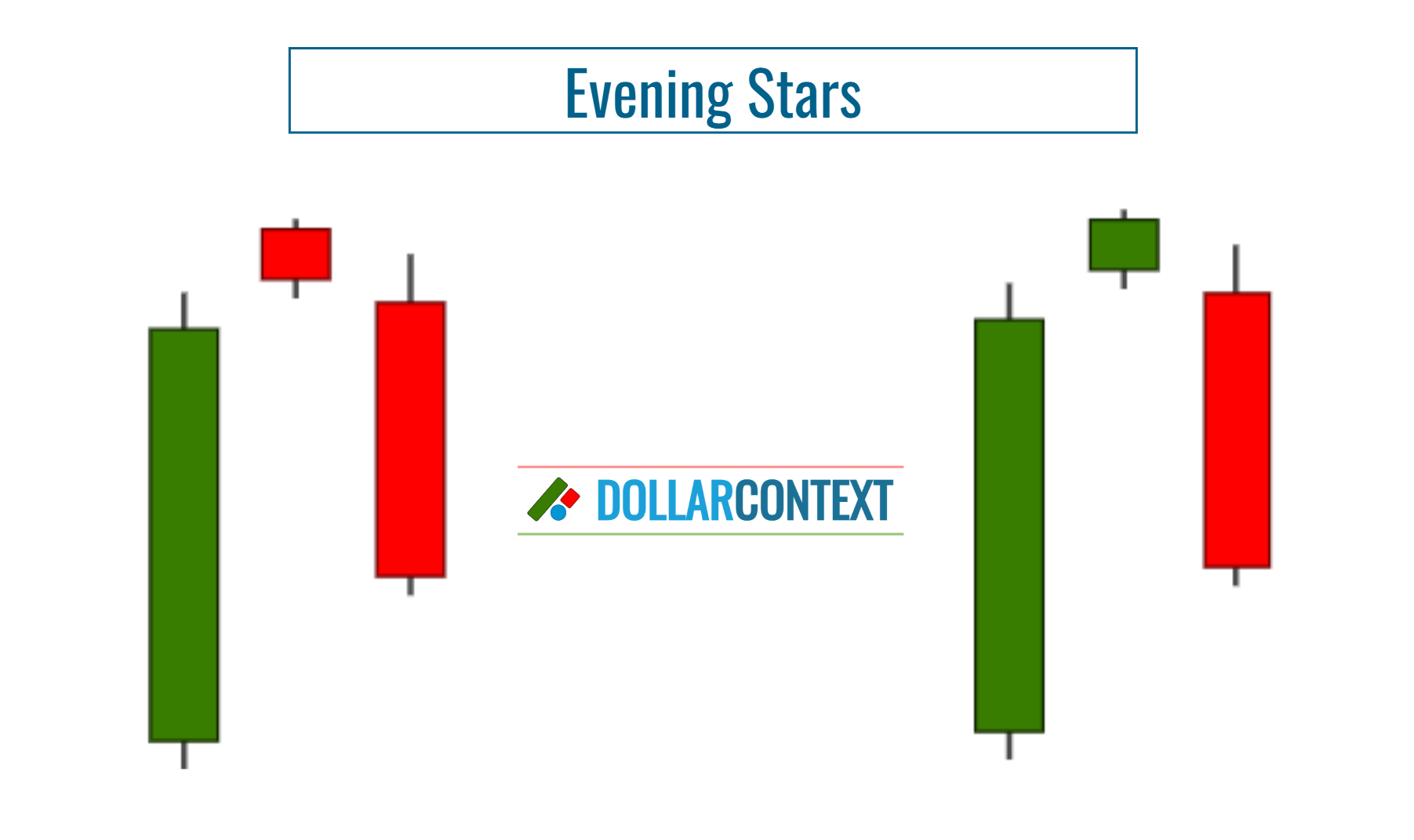
This configuration is often interpreted as a sign that the market's bullish momentum may be waning, setting the stage for a possible bearish reversal.
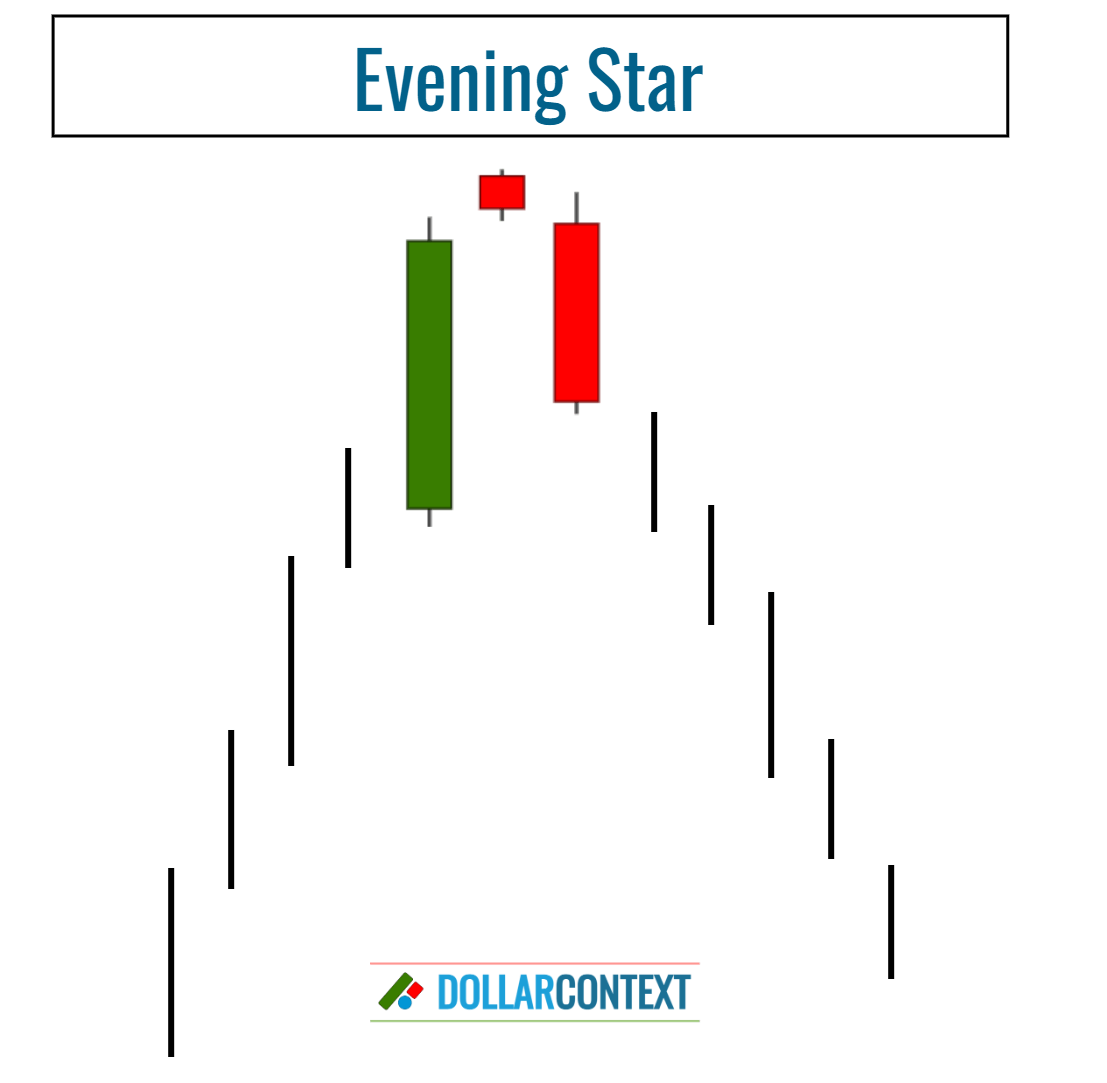
Differences and Similarities with Other Patterns
The evening star pattern bears resemblance to a family of related candlestick configurations, including:
- Shooting Star
- Tower Top
- Doji
1. Evening Star vs. Shooting Star
When the three candles of an evening star are observed as a combined shape, ignoring the gaps between them, they can look similar to a shooting star pattern. The shooting star typically has a small body at the lower end of the trading range and a long upper shadow that indicates a failed attempt to push the price higher.
The visual similarity is due to the combined length of the candles creating a long "shadow" that would be characteristic of a shooting star's long upper wick.
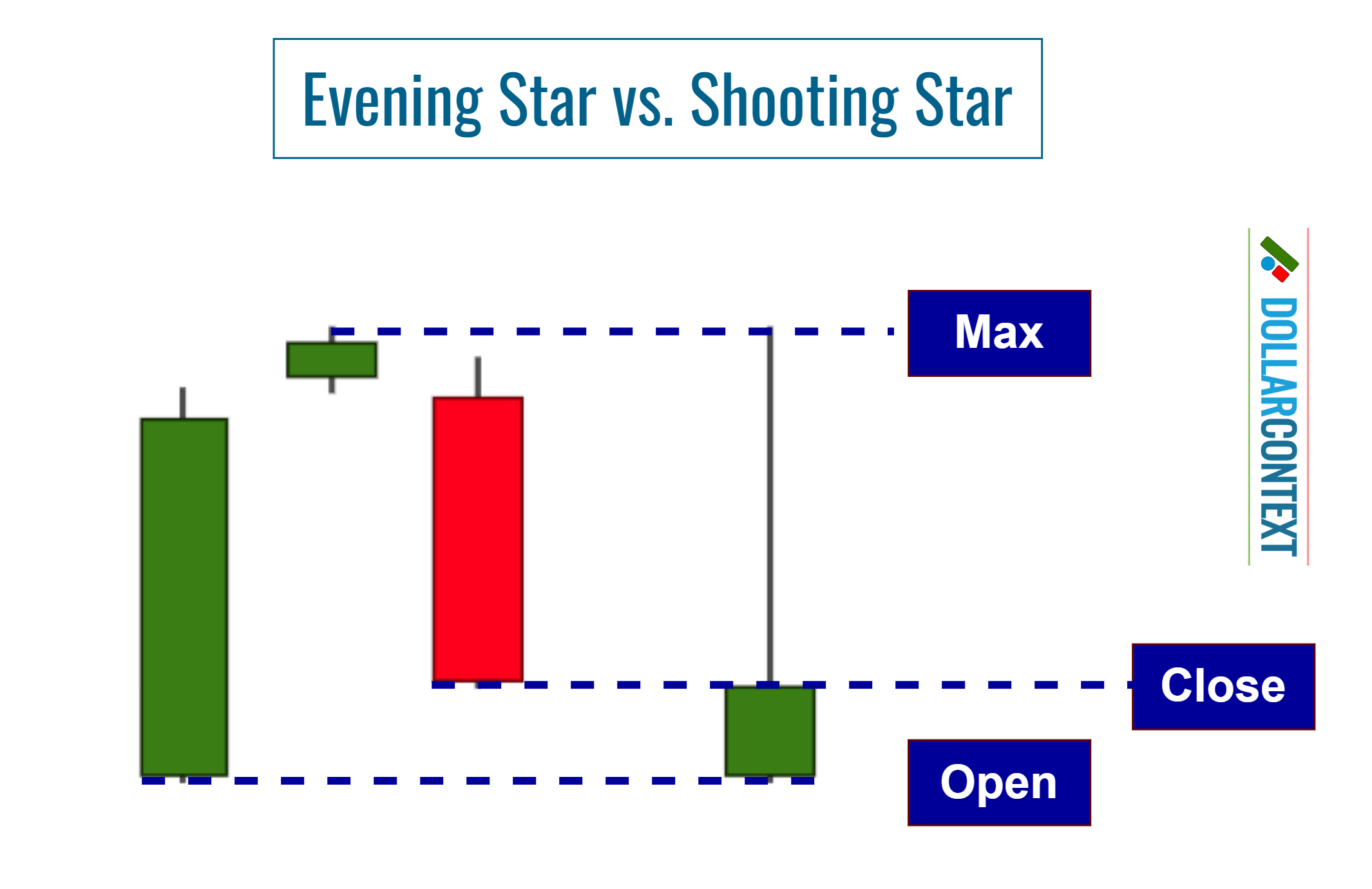
Similarities: Both patterns denote selling pressure at high levels and the inability of the buyers to sustain the high prices.
Differences: Some variations of the evening star pattern cannot be interpreted as, or converted into, a shooting star pattern.
2. Evening Star vs. Tower Top
A tower top is a bearish reversal pattern. It is characterized by a sharp rise in price, reflected by one or more large green candlesticks, followed by a consolidation period with smaller candles. This is then succeeded by a sharp decline, mirrored by one or more large red candlesticks.
The pattern is named for its resemblance to two towering structures, with the initial and final candles of the formation standing tall like the towers of a fortress.
The tower top pattern can be viewed as a variant of the evening star. Both patterns exhibit a similar structure of an initial strong bullish move, followed by indecision, and culminating in a decisive bearish turn.
Note that the lull period of a tower top can be interpreted as the second session of an evening star.
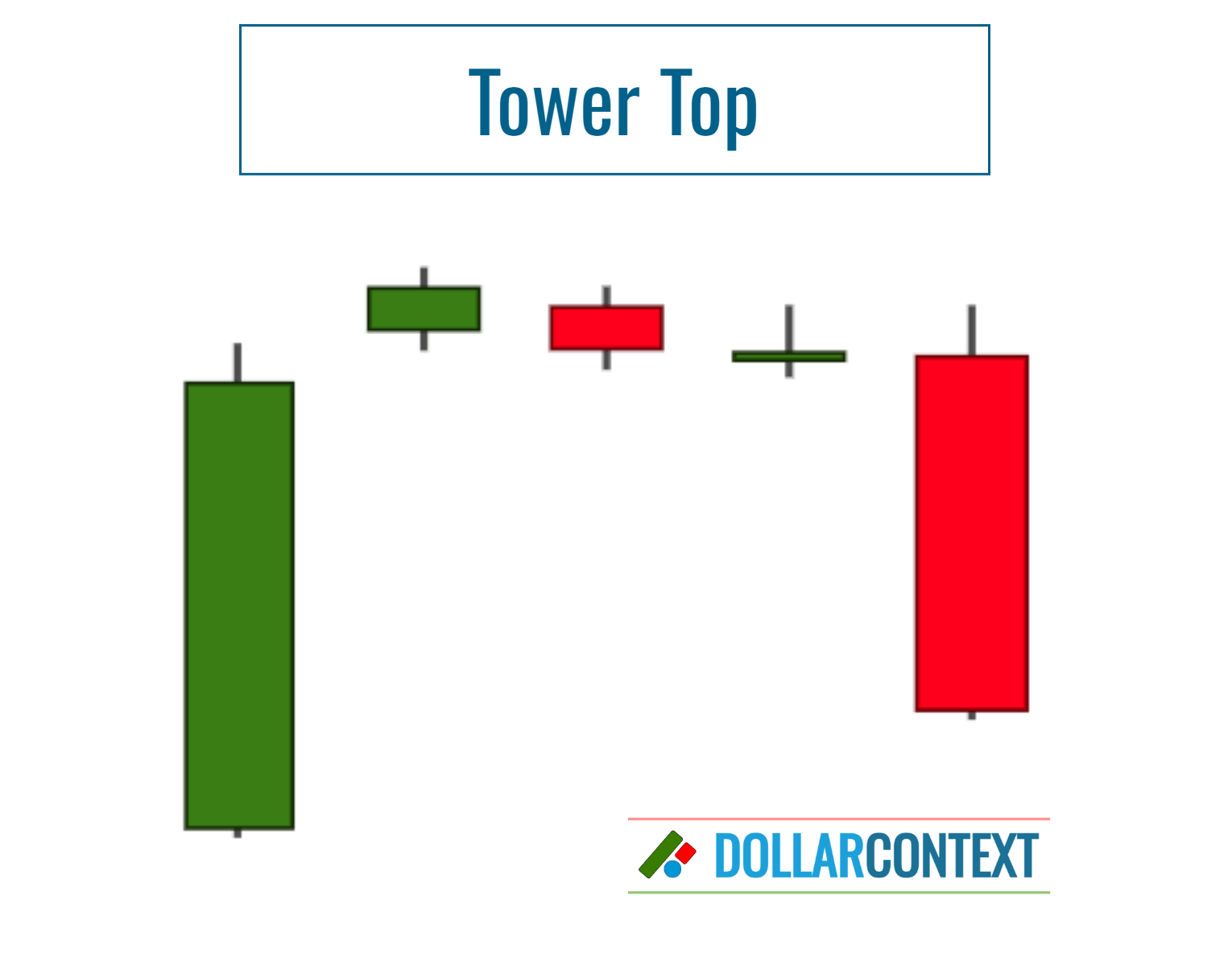
Similarities: Both configurations indicate initial robust buying momentum and a phase of uncertainty that concludes with a market reversal.
Differences: The period of uncertainty within the tower top pattern extends over a longer duration compared to that in the evening star formation.
3. Evening Star vs. Doji
A doji is a candlestick pattern used in technical analysis that indicates indecision in the market. It is represented by a candle that has an almost identical opening and closing price, hence a tiny body. The lengths of the upper and lower shadows can vary, and the pattern suggests a balance between buying and selling pressure.
A doji or a near-doji candle can also be part of the evening star pattern when it serves as the second candle in the three-candle formation. This makes the reversal signal of the evening star even stronger, as the doji enhances the indecision or struggle between buyers and sellers. This configuration is called evening doji star.
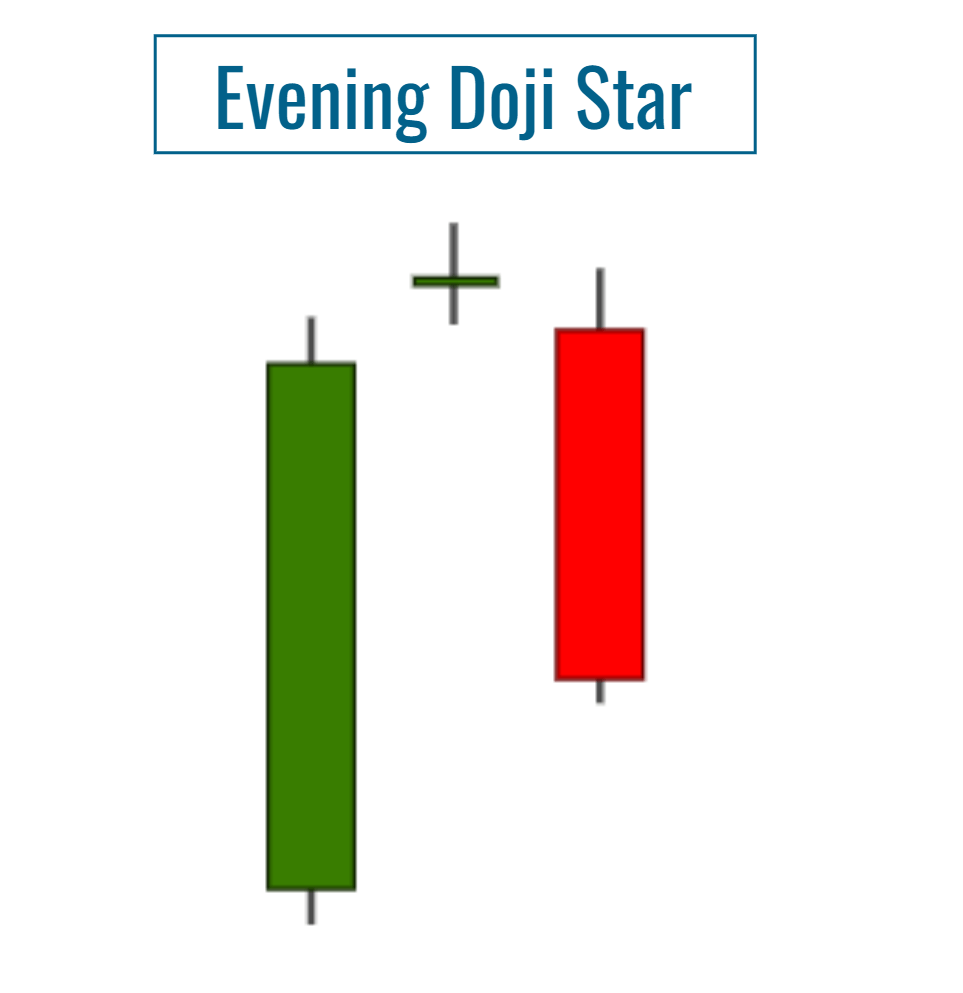
If a doji appears with an upward price gap (where its shadows do not overlap the previous candle) and is succeeded by a black candlestick that gaps downward (its shadows also not overlapping), it represents a potent top reversal signal. This particular formation is known as "abandoned baby top," which is a notably rare occurrence in the market.
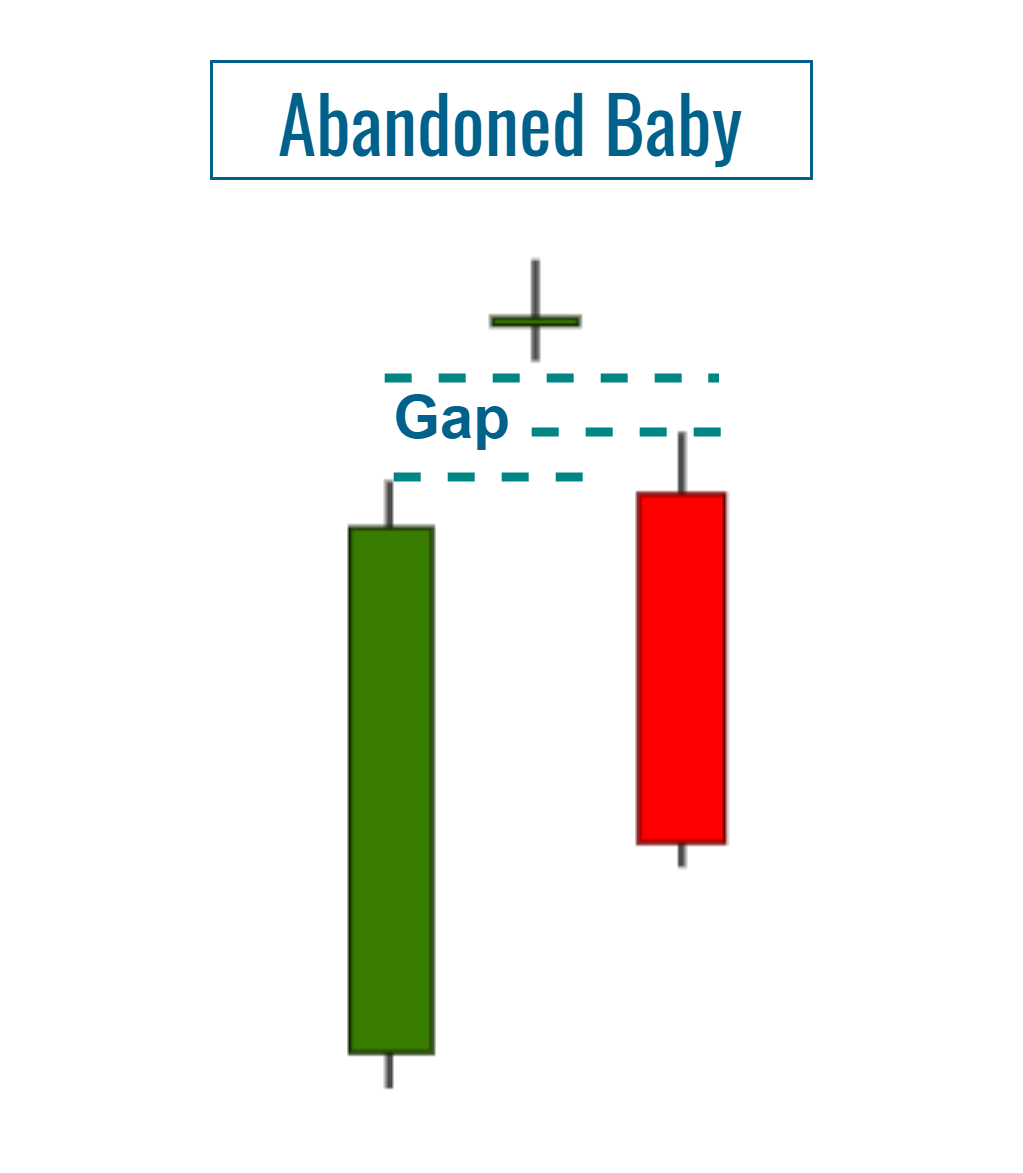
Both the evening doji star and the abandoned baby top are subtypes of the evening star pattern.
A doji session is particularly relevant when emerging after a tall white candle, like in the case of the evening star.
Similarities: Both the doji and the small candle in an evening star pattern can indicate market indecision. The small candle of an evening star, particularly if it's a doji, reflects a slowdown in the previous trend's momentum.
Differences: The main difference is that the doji is a single candlestick pattern and can be ambiguous on its own, requiring confirmation from subsequent candles. In contrast, the evening star is a multi-candlestick pattern that provides a more complete narrative of shifting market sentiment. We'll add here that while the classic evening star pattern includes a small-bodied candle, which can be a doji, indicating indecision, not all variations of the pattern will feature a candle of this type.





